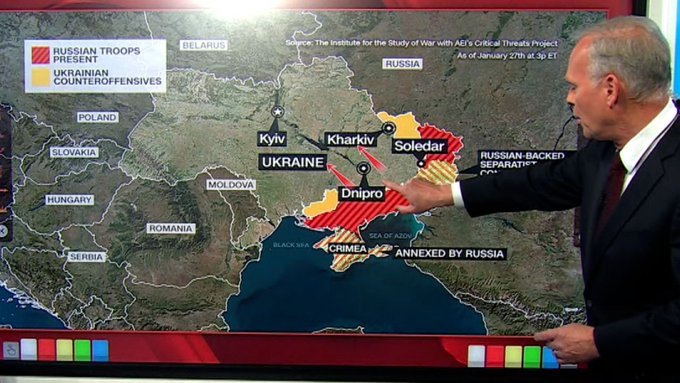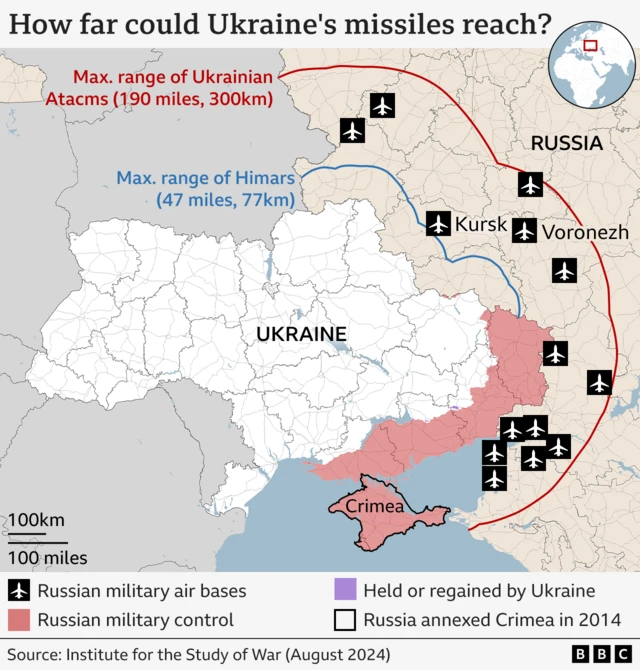. Several factors contribute to this prediction:
- Russia: Despite suffering heavy losses and achieving only limited territorial gains, Russia continues to pursue its objective of expanding its control over Ukrainian territory and has not shown willingness for good-faith negotiations.
- Ukraine: Ukraine, despite immense losses and damage to its infrastructure, maintains a strong will to fight and remains determined to defend its territory, particularly in eastern Ukraine where the fighting is most intense.
- Escalatory Actions: Both sides have taken actions that could be seen as escalatory, such as Russia’s continued attacks on Ukrainian civilian infrastructure and Ukraine’s strikes on Russian strategic targets.
- Increased Risk of Escalation: Some analysts believe that the conflict is entering a more dangerous phase, characterized by heightened risk levels due to attacks on strategic systems.
- Putin’s Potential Response: There are concerns that Russia may intensify its military actions in response to setbacks or perceived threats to its internal stability, potentially including the use of nuclear weapons.
- Nuclear Escalation: The possibility of nuclear escalation, though with enormous risks, is considered plausible if Russia perceives a threat to its regime or if battlefield losses threaten its security.
- US Foreign Policy: The upcoming US presidential transition and statements from figures like Donald Trump suggesting a potential shift in US support for Ukraine raise concerns about the conflict’s future trajectory.
- NATO Support: Maintaining NATO alliance cohesion and continued support for Ukraine are seen as crucial for deterring Russian escalation.
- Russia’s Military Capabilities and Will to Fight: Despite heavy losses, Russia’s continued ability to replenish its forces and its reliance on mass attacks indicate a determination to continue the conflict. However, sustaining the conflict at the current level of attrition will require continued material support from the West.
- Protracted Conflict: One potential scenario is the continuation of the current attritional conflict, particularly if neither side is willing to make concessions in peace negotiations.
- Decisive Victory: While considered unlikely by some analyses, a decisive victory for either side is a possibility, though the current battlefield dynamics suggest this would be a difficult and costly outcome.
- Potential for Escalation: While a nuclear conflict is not the most likely outcome, there are concerns that the war could escalate beyond the current level of fighting. Experts from the Carnegie Endowment for International Peace have discussed the possibility of Russia using tactical nuclear weapons in response to certain battlefield developments.
- Russian Response to Ukrainian Strikes: The recent Ukrainian attacks on Russian airbases and infrastructure, including the use of drones, have raised concerns about how Russia might respond. The New York Times reports that some analysts believe Putin may respond with “heavier indiscriminate bombing of Ukrainian cities and infrastructure”.
- Factors Contributing to Escalation: Several factors could contribute to escalation, including:
- Military stalemate: The war has become a war of attrition, with neither side making significant gains. This could lead to desperation and a willingness to escalate.
- Western support for Ukraine: Western nations continue to provide military and financial aid to Ukraine, which Russia views as a threat.
- Domestic political pressures in Russia: Putin may be facing pressure from within Russia to take a more aggressive stance in the war.
- Ukraine’s military successes: Recent Ukrainian attacks on Russian territory, particularly the drone strikes, have demonstrated their ability to reach deep into Russian territory.
- Risk of Nuclear Escalation: While unlikely, the possibility of Russia using tactical nuclear weapons cannot be ruled out entirely. This could be triggered by a significant loss of territory, a perceived existential threat to the Russian state, or other factors.
- International Response: The international community has expressed concern about the potential for escalation and has urged all parties to de-escalate the conflict. The United Nations has also urged parties to reverse the dangerous cycle of escalation. [3, 4, 5, 6, 7, 8, 9, 10, 11, 12, 13, 14, 15, 16, 17, 18, 19, 20, 21, 22]
.
- Increased casualties and humanitarian crisis: Further escalation would likely lead to more deaths and injuries, worsening the already severe humanitarian situation in Ukraine.
- Geopolitical implications:
- Weakened European-Russian relations: The conflict has already significantly strained relations between Europe and Russia, and escalation would further exacerbate this.
- Increased tensions between NATO and Russia: The war has made NATO-Russia relations their most precarious since the Cold War, and escalation could raise concerns about direct conflict.
- Strengthened ties between the United States and its European allies: The war has provided an opportunity for the United States to deepen its relationships with European allies, and escalation could further solidify these alliances.
- Rethinking of defense spending and alliances: Major powers are reassessing their investment in and allocation of resources, and escalation could prompt increased defense production and cooperation.
- Economic impacts:
- Disruption of global trade and supply chains: The conflict has already impacted global trade and supply chains, particularly for energy and food commodities, and escalation could cause further disruptions.
- Increased energy and food prices: The conflict has contributed to rising energy and food prices, and escalation could exacerbate inflationary pressures globally.
- Financial market volatility: Escalation could lead to increased volatility and uncertainty in financial markets.
- Increased risk of economic hardship: The economic consequences of the conflict, coupled with potential escalation, could exacerbate poverty and food insecurity, particularly in low-income countries dependent on imports.
- Military escalatory options:
- Russia’s potential for nuclear escalation: Russia has the capability to deliberately escalate the conflict further, including the possibility of using tactical nuclear weapons, which could have devastating consequences.
- Increased Russian reliance on China: Continued conflict and sanctions could further drive Russia closer to China, increasing its dependence.
- Continued conflict and stalemate: The current attritional conflict could continue, at least through the first half of 2025, if neither side achieves a decisive victory.
- Negotiated settlement: While challenging, a ceasefire deal remains a possibility, potentially leading to a more stable situation.
- Decisive victory by either side: This scenario is considered less likely, as it would require significant shifts in the balance of power.
- Maintaining open communication: Keeping channels of military and diplomatic communication open with Russia is crucial to help prevent an escalatory spiral.
- Diversification of supply chains: Reducing reliance on individual trading partners and diversifying supply chains is important to mitigate the risks of cascading impacts.
- International cooperation: A multilateral approach, focusing on diplomatic solutions, is needed to address the conflict and promote stability.
Ukraine and Russia Escalate Attacks, Hinting at a New Brutal Phase of War
Kyiv and Moscow, Friday, June 6, 2025 – A sharp escalation in hostilities between Russia and Ukraine signals a potentially devastating new chapter in the now three-year-long conflict.
In a series of audacious operations in early June, Ukraine successfully targeted Russian strategic bomber bases deep within Russian territory and once again struck the critically important Kerch Bridge linking Russia to occupied Crimea.
In response, Russia unleashed what it termed a “massive attack” on Ukrainian urban centers, targeting critical infrastructure and residential areas.
The Evolving Battlefield: A War of Attrition and Innovation
The recent escalation underscores a dual reality on the frontlines. While much of the ground war remains a grinding battle of attrition, particularly in the eastern Donbas region, both sides are increasingly leveraging technological innovations to gain an edge.
Ukraine’s Asymmetric Advantage: Lacking the sheer numbers of troops and conventional weaponry of Russia, Ukraine has pivoted to an asymmetric strategy, heavily reliant on domestically produced, highly effective drones.
Russia’s Strategy of Overwhelm: Russia, in turn, continues to rely on its quantitative superiority in artillery and manpower. Its current strategy appears focused on a slow, methodical advance in the east, aiming to exhaust Ukrainian forces and capture the entirety of the Donetsk and Luhansk oblasts. The recent widespread attacks on Ukrainian cities serve a dual purpose: to retaliate for Ukrainian strikes and to terrorize the civilian population, hoping to create a humanitarian crisis and pressure Kyiv into concessions.
Predictive Analysis: What to Expect Next
Based on the current trajectory and expert analysis, the following developments are likely in the near to medium term:
-
Intensified Long-Range Strikes: Both sides are expected to continue and likely intensify their long-range strike campaigns. Ukraine will likely continue to target Russian military infrastructure, logistics hubs, and symbols of Russian power to disrupt war efforts and sow discord within Russia.
12 Russia, in turn, is expected to continue its punishing attacks on Ukrainian cities and critical infrastructure, especially energy facilities, as winter approaches. -
A “Gray Zone” of Warfare: The conflict is likely to see an expansion of “gray zone” activities, including cyberattacks, disinformation campaigns, and acts of sabotage. Both Russia and Ukraine will seek to undermine the other’s societal cohesion and political stability.
-
The Specter of a New Humanitarian Crisis: Russia’s targeting of civilian infrastructure, if sustained, could lead to a severe humanitarian crisis in Ukraine, particularly during the colder months. This could result in a new wave of internally displaced persons and refugees, further straining Ukrainian resources and those of its international partners.
-
Dim Prospects for Near-Term Negotiations: The current escalation has pushed the prospects for meaningful peace negotiations further into the distance. Both sides appear to believe they can still achieve their objectives militarily, or at least improve their negotiating position through battlefield gains. The maximalist positions of both Kyiv and Moscow leave little room for compromise at present.
-
The Decisive Role of International Support: Ukraine’s ability to sustain its defense and continue its strategic strikes is critically dependent on the continued flow of Western military and financial aid. Any significant disruption or reduction in this support would severely hamper Kyiv’s war effort and could tip the balance in Moscow’s favor. Conversely, an increase in the provision of advanced weaponry to Ukraine could further enhance its deep-strike capabilities. The political will in key Western capitals, particularly Washington and Brussels, will be a crucial variable in the coming months.
The recent escalation marks a dangerous new turn in the Russia-Ukraine war. While Ukraine has demonstrated remarkable resilience and ingenuity, Russia’s capacity for brutal and widespread destruction remains immense. The path forward is likely to be marked by further violence and suffering, with the ultimate outcome hinging on the evolving military balance, the steadfastness of international support for Ukraine, and the faint hope that a path to a just and lasting peace can eventually be forged from the crucible of this devastating conflict.


